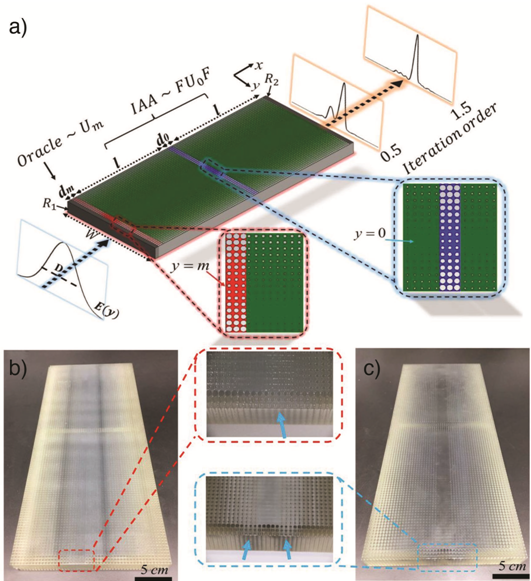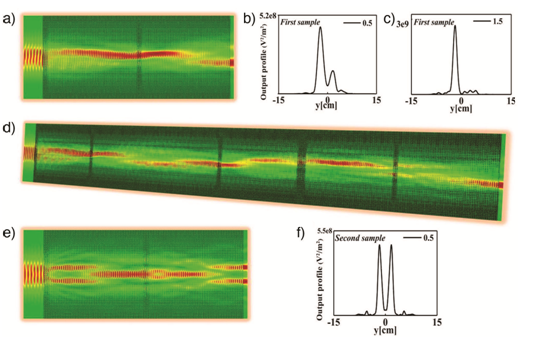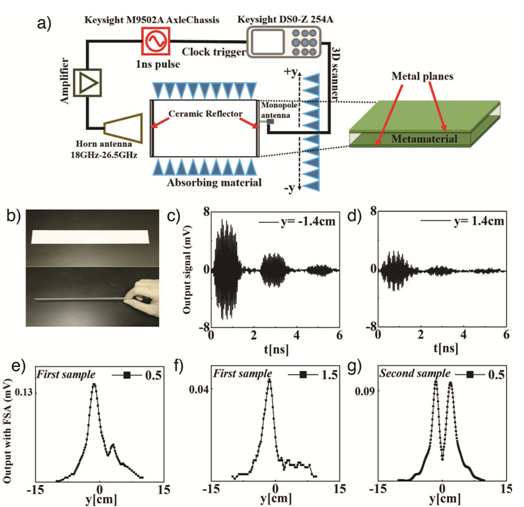BIT makes significant progress on research into optical chip and magnetism metamaterials
¡¡¡¡With the support of National Key R&D Plan and National Natural Science Foundation of China, the study of Zhang Xiangdong¡¯ s research group (Zhang Weixuan, PhD student and his supervisor Zhang Xiangdong, professor of BIT) and Li Hongqiang¡¯s research group (Li Hongqiang, professor of Tongji University) Implementing Quantum Search Algorithm with Metamaterials ¡¾Adv. Mater. 29, 1703986 (2017)¡¿was published online in Advanced Materials.
¡¡¡¡Metamaterials, artificially structured electromagnetic (EM) materials, have enabled the realization of many unconventional EM properties not found in nature, such as negative refractive index, magnetic response, invisibility cloaking, and so on. Based on these man-made materials with novel EM properties, various devices are designed and realized. Recently, the research group of American scientist professor N.Engheta performed mathematical operations, such as integration, spatial differentiation, and convolution by using designed metamaterial blocks. Comparing with traditional optical computation scheme has metamaterials advantages like miniaturized and easily intergrated, which makes it possible to realize full-optical-computation chip. But metamaterial devices that can perform quantum algorithm has not be designed yet.
¡¡¡¡Quantum search algorithm is a typical quantum algorithm. It¡¯s efficiency  ( N stands for the number of equivalent search data) is higher than the efficiency of classical research algorithm(~N). Recently, we theoretical designed microwave metamaterial chip, as shown in figure 1a, and we numerically demonstrated the implementation of quantum search algorithm at microwave frequencies, as shown in figure 2. Then we fabricated these chips by using 3D-printing technology, as shown in figure 1b and 1c, and demonstrated that its search efficiency is ,which is precisely consistent with the efficiency of the quantum search algorithm, as shown in figure 3. Our metamaterial device for an all-optical quantum searching simulator provides a new way to shed light on quantum analog behaviors, which may lead to remarkable achievements in wave-based signal processors.
( N stands for the number of equivalent search data) is higher than the efficiency of classical research algorithm(~N). Recently, we theoretical designed microwave metamaterial chip, as shown in figure 1a, and we numerically demonstrated the implementation of quantum search algorithm at microwave frequencies, as shown in figure 2. Then we fabricated these chips by using 3D-printing technology, as shown in figure 1b and 1c, and demonstrated that its search efficiency is ,which is precisely consistent with the efficiency of the quantum search algorithm, as shown in figure 3. Our metamaterial device for an all-optical quantum searching simulator provides a new way to shed light on quantum analog behaviors, which may lead to remarkable achievements in wave-based signal processors.
¡¡¡¡
¡¡¡¡
¡¡¡¡
¡¡¡¡Figure 1.
¡¡¡¡a)Theoretical designed microwave metamaterial chip to perform quantum research algorithm.
¡¡¡¡b,c) Metamaterial chips that can perform quantum research algorithm, fabricated by using 3D-printing technology.
¡¡¡¡

¡¡¡¡Figure 2
¡¡¡¡Theoretical simulation of the quantum search algorithm of microwave performed on the metamaterial.

¡¡¡¡
Figure 3
¡¡¡¡a) Microwave experimental platform
¡¡¡¡b) Reflector
¡¡¡¡c) Experimental measurements of the metamaterial-based quantum search algorithm.

